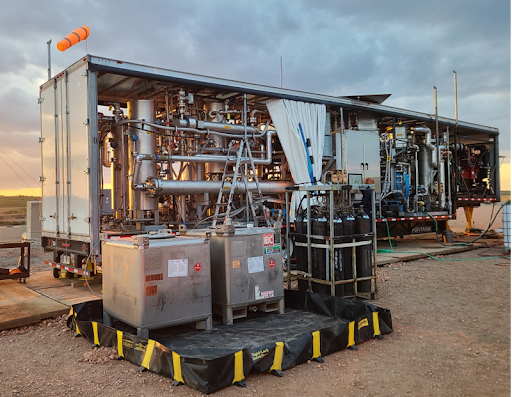What is Flare Gas? Understanding its Impact, Causes, and Solutions
Understanding Flare Gas: Origins, Impacts, and Solutions
What Is Flare Gas?
Flare gas, also known as associated petroleum gas (APG), is natural gas that is produced alongside crude oil during extraction. This gas often contains methane, carbon dioxide, hydrogen sulfide, and other hydrocarbons. Due to logistical, economic, or technical constraints, this gas is sometimes flared—burned off in open flames—at oil production sites.
Why Is Flare Gas Produced?
Flare gas arises from several scenarios:
-
Routine Flaring: Occurs during normal operations when gas cannot be processed or transported.
-
Emergency Flaring: Used to relieve pressure or during system malfunctions.
-
Maintenance Flaring: Employed during scheduled maintenance activities.
-
Safety Flaring: Activated to prevent over-pressurization of equipment.
While flaring is sometimes necessary for safety, it often results from the absence of infrastructure to capture and utilize the gas.
Environmental and Health Impacts
The environmental consequences of flare gas are significant:
-
Greenhouse Gas Emissions: Flaring releases carbon dioxide (CO₂) and methane, potent greenhouse gases contributing to climate change.
-
Air Pollution: Emissions include nitrogen oxides, sulfur dioxide, volatile organic compounds, and black carbon, leading to smog and health issues.
-
Local Health Hazards: Communities near flaring sites face respiratory problems, cancer risks, and contaminated water sources.
-
Ecosystem Damage: Heat and pollutants from flares can destroy vegetation and disrupt local ecosystems.
Global Scale of Gas Flaring
Globally, gas flaring is a widespread issue:
-
Annual Emissions: In 2018, flaring resulted in approximately 350 million tonnes of CO₂ emissions.
-
Major Contributors: Countries like Russia, Iraq, Iran, and the United States account for nearly 50% of global flaring.
-
Nigeria’s Challenge: Nigeria flares about 70% of its associated gas, ranking among the highest in global emissions.
Technological Solutions to Mitigate Flaring
Efforts to reduce flaring focus on capturing and utilizing flare gas:
-
Flare Gas Recovery Systems (FGRS): Technologies that capture flare gas and convert it into usable energy, reducing emissions and providing economic benefits.
-
Gas-to-Power Technologies: Systems that convert flare gas into electricity, offering a sustainable energy source.
-
Regulatory Measures: Policies and regulations aimed at reducing flaring, such as the U.S. Department of Energy’s funding for flare reduction technologies.
The Path Forward
Addressing flare gas requires a multifaceted approach:
-
Infrastructure Development: Building pipelines and processing facilities to capture and transport flare gas.
-
Policy Implementation: Enforcing regulations that limit flaring and promote gas utilization.
-
Technological Innovation: Investing in research and development of efficient flare gas recovery and utilization technologies.
-
Community Engagement: Involving local communities in monitoring and decision-making processes to ensure environmental justice.
Conclusion
Flare gas represents a significant environmental and economic challenge. By understanding its origins, impacts, and the technologies available to mitigate its effects, we can work towards a more sustainable and responsible energy future. Addressing flare gas is not only crucial for environmental protection but also for the well-being of communities affected by its emissions.




